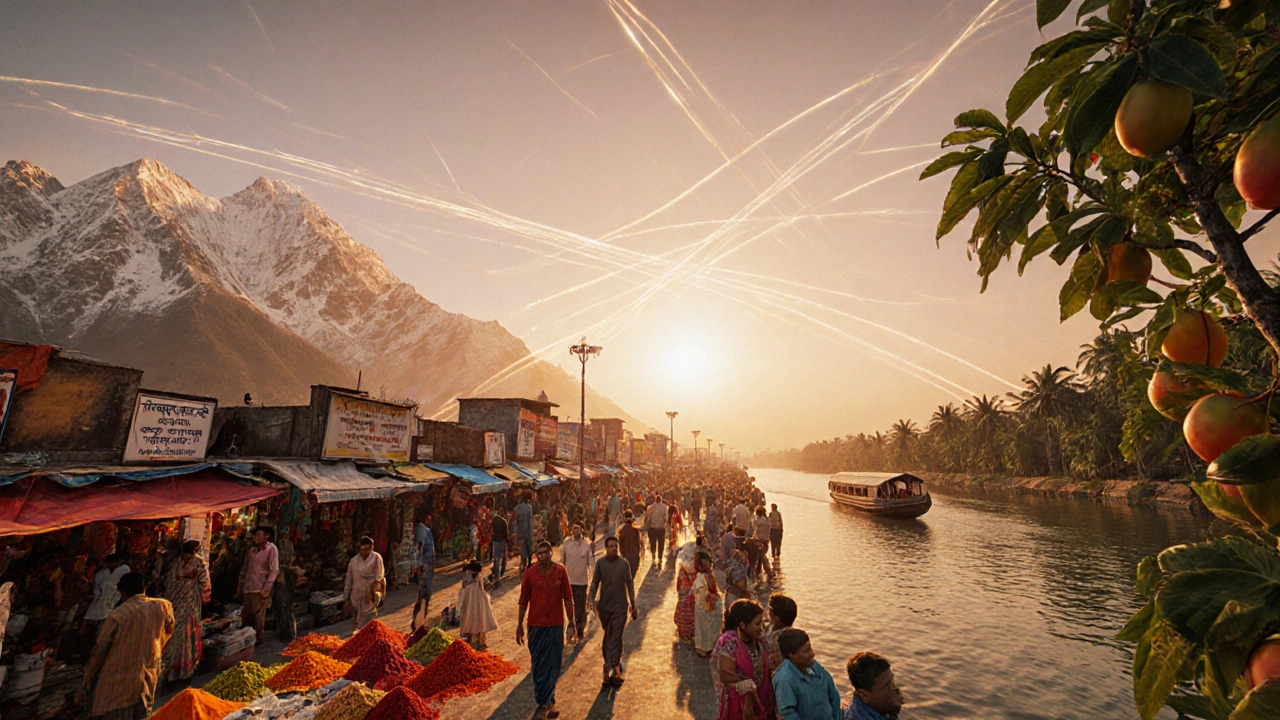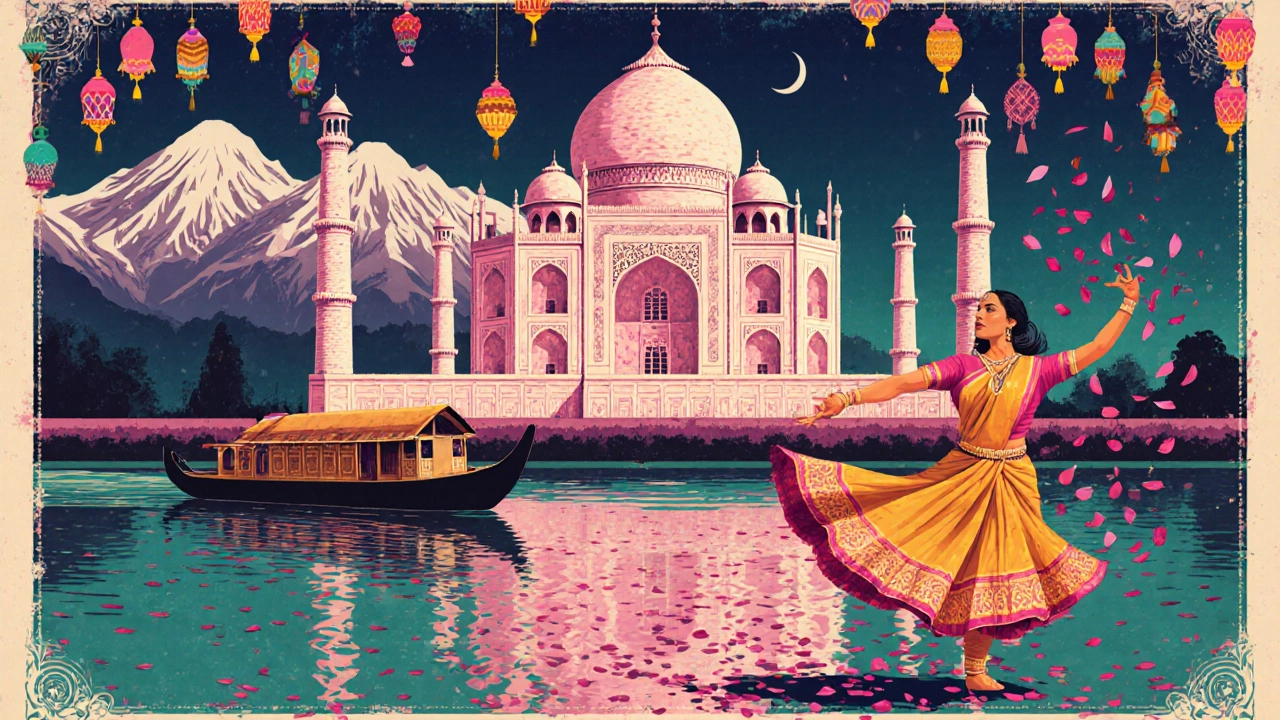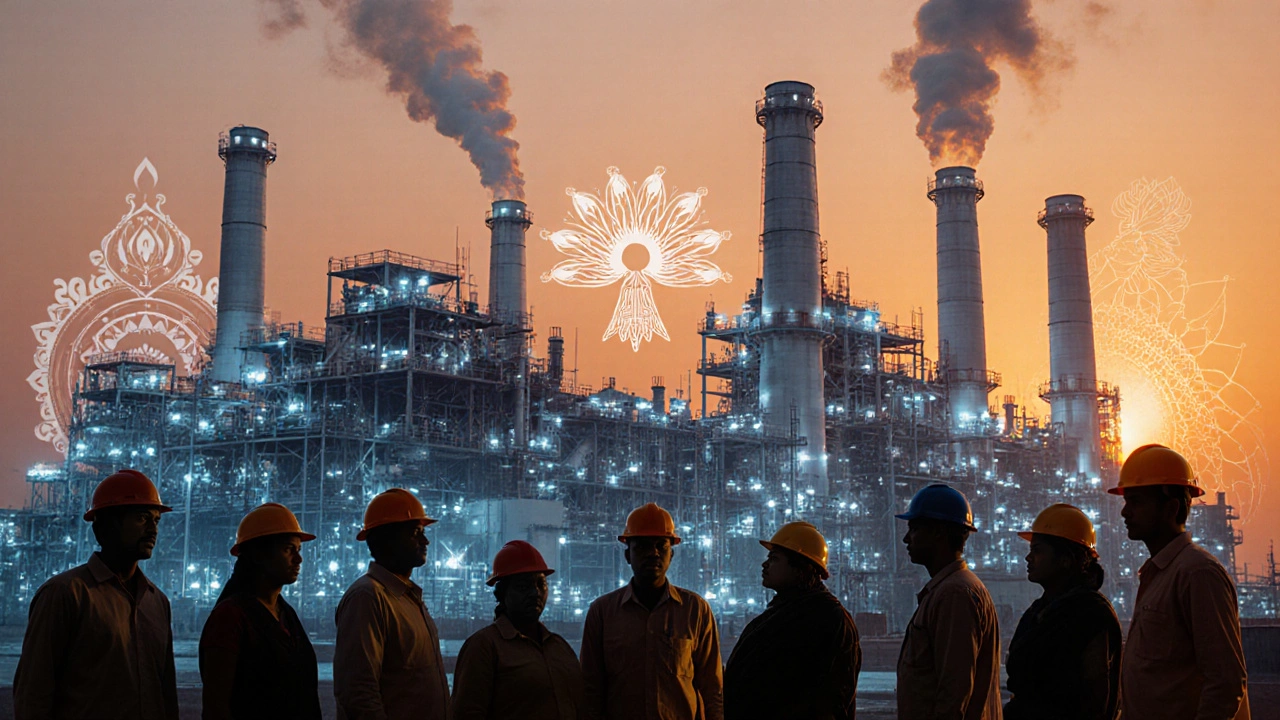Famous India Slogans: Meaning, History & Examples
 Oct, 10 2025
Oct, 10 2025
Indian Slogans Explorer
About This Tool
This interactive tool showcases the most significant slogans used in India across different sectors. Each slogan is linked to its historical context, launch year, and primary purpose.
Click on any slogan card to see detailed information.
When you hear a short, punchy phrase that instantly evokes the spirit of a nation, you’re probably thinking of a slogan. India is a country buzzing with diverse cultures, languages, and landscapes, and over the years it has accumulated a rich collection of slogans that capture its essence. From tourism campaigns that sell the wonder of the subcontinent to government drives that push economic self‑reliance, these taglines tell a story of pride, ambition, and unity.
Key Takeaways
- India’s slogans fall into four broad groups: national/patriotic, tourism, economic development, and cultural/social.
- Each slogan carries a specific launch year, purpose, and key agency behind it.
- Understanding the context behind the slogans reveals how India projects its identity at home and abroad.
- The most iconic line, India slogans, still shapes perceptions of the nation today.
- Use this guide to pick the right tagline for presentations, social media posts, or personal projects about India.
National & Patriotic Slogans
Patriotic slogans are the emotional backbone of any nation. In India, a few phrases have become almost constitutional in their usage.
Vande Mataram is a hymn first penned by Bankim Chandra Chatterjee in 1870. Adopted as a rallying cry during the freedom struggle, it later found a place in the national anthem’s opening verses. The slogan translates to “I bow to thee, Mother,” and is invoked during school assemblies, political rallies, and military ceremonies.
Another timeless line is “Jai Hind,” coined by Subhas Chandra Bose in the 1940s. Meaning “Victory to India,” it’s a salute used by the armed forces and civilians alike to express national pride.
These slogans do more than cheer crowds; they reinforce a shared identity, especially in a country with over 1.3billion people and 22 official languages.
Tourism Campaign Slogans
When you think of a travel ad that made you want to book a ticket, chances are it featured India’s flagship tourism tagline.
Incredible India was launched in 2002 by the Ministry of Tourism. The campaign showcased everything from the Himalayas to the backwaters of Kerala, positioning India as a land of unparalleled variety. The word “incredible” is deliberately vague, allowing each traveler to fill it with personal wonder.
Following its success, the government introduced Atithi Devo Bhava (Guest is God) as a sub‑theme to promote hospitality. While not a slogan in the strict marketing sense, it appears on signage, brochures, and airline seat‑back screens, reminding hosts to treat tourists with reverence.

Economic & Development Slogans
India’s rapid economic growth has been backed by a suite of slogans that aim to attract investment, boost manufacturing, and encourage self‑reliance.
Make in India was unveiled in 2014 by Prime Minister Narendra Modi. Its goal: turn India into a global manufacturing hub by simplifying regulations, improving infrastructure, and offering fiscal incentives. The phrase appears on everything from factory walls to social media hashtags.
In 2020, the government rolled out Atmanirbhar Bharat (Self‑reliant India) as a response to global supply‑chain disruptions. The campaign focuses on local sourcing, digital transformation, and enhancing export competitiveness.
Another enduring push is Swadeshi, a slogan revived during the COVID‑19 pandemic to urge citizens to buy Indian‑made goods. Though its roots go back to the 1900s freedom struggle, the modern version is backed by e‑commerce platforms and “Buy Indian” discounts.
Cultural & Social Slogans
Beyond government campaigns, everyday Indians use short, memorable lines that reflect societal values.
Namaste is a greeting that literally means “I bow to the divine in you.” While not a slogan, it has become an international cultural emblem for India, often used in tourism videos and diplomatic settings.
“Unity in Diversity” is a phrase taught in schools to celebrate India’s pluralistic fabric. It highlights the coexistence of multiple religions, languages, and traditions under one nation‑state.
These cultural slogans are frequently woven into public service announcements, brand taglines, and social media challenges, reinforcing a collective ethos.
Side‑by‑Side Comparison of Major Indian Slogans
| Slogan | Year Launched | Agency / Origin | Primary Goal |
|---|---|---|---|
| Vande Mataram | 1870 (song) - 1947 (adopted) | Freedom movement | Patriotic unity |
| Incredible India | 2002 | Ministry of Tourism | Boost tourism arrivals |
| Make in India | 2014 | Ministry of Commerce & Industry | Attract manufacturing investment |
| Atmanirbhar Bharat | 2020 | Government of India | Increase self‑reliance |
| Swadeshi | 1900s (revived 2020) | Various NGOs & Govt. | Promote local consumption |
| Unity in Diversity | 1965 (formalized) | Educational bodies | Highlight pluralism |

How to Use Indian Slogans Effectively
Whether you’re creating a presentation, designing a poster, or writing a social media post, here are some quick tips:
- Match tone with audience: “Make in India” works for B2B investors, while “Namaste” fits cultural tourism content.
- Pair the slogan with a visual cue: the TajMahal for “Incredible India,” a factory silhouette for “Make in India.”
- Keep it authentic: avoid over‑using “Swadeshi” in contexts unrelated to local products; authenticity resonates more.
- Credit the source when possible: a brief note like “*Government of India, 2020*” adds credibility.
- Test brevity: slogans are meant to be memorable; stick to the original phrasing rather than paraphrasing.
Common Misconceptions About Indian Slogans
Many people assume every popular phrase about India is an official government slogan, but that’s not the case. For example, “BharatMataKiJai” is a patriotic chant but never received formal branding status. Similarly, “DeshBharatMahan” circulates on social media without any official backing.
Understanding the difference helps avoid accidental misuse, especially in academic or corporate settings where credibility matters.
Frequently Asked Questions
What is the oldest Indian slogan still in use?
"Vande Mataram" dates back to the 1870s and continues to be invoked at official events, making it the oldest living slogan.
How did "Incredible India" boost tourism?
The campaign combined stunning visuals, celebrity endorsements, and digital outreach, leading to a 12% rise in foreign tourist arrivals between 2002 and 2007.
Is "Make in India" still active?
Yes. The initiative has evolved with new policies like Production‑Linked Incentive (PLI) schemes, but the core tagline remains unchanged.
Can I use "Atmanirbhar Bharat" in a commercial?
The slogan is public domain, but businesses should ensure the usage aligns with the government’s self‑reliance narrative to avoid misrepresentation.
What does "Unity in Diversity" really mean for India?
It reflects the coexistence of 22 official languages, dozens of religions, and a myriad of regional cultures under one constitutional framework.